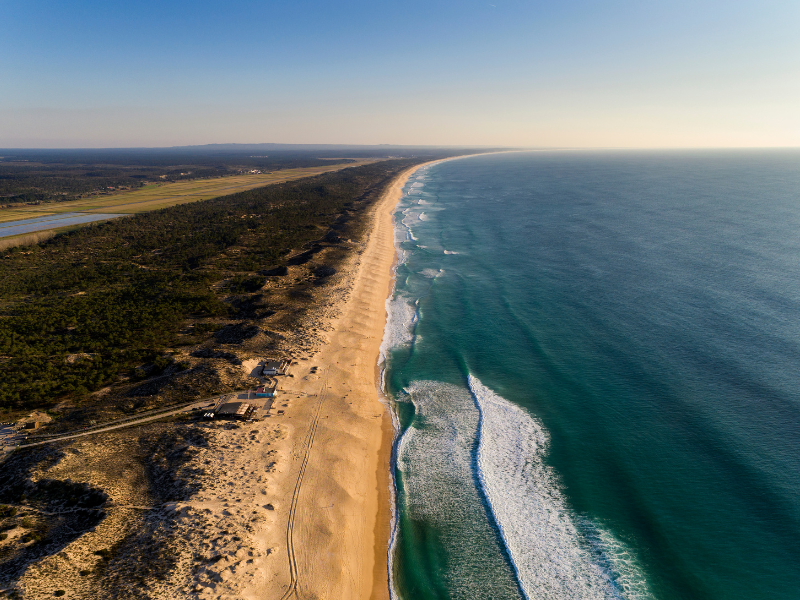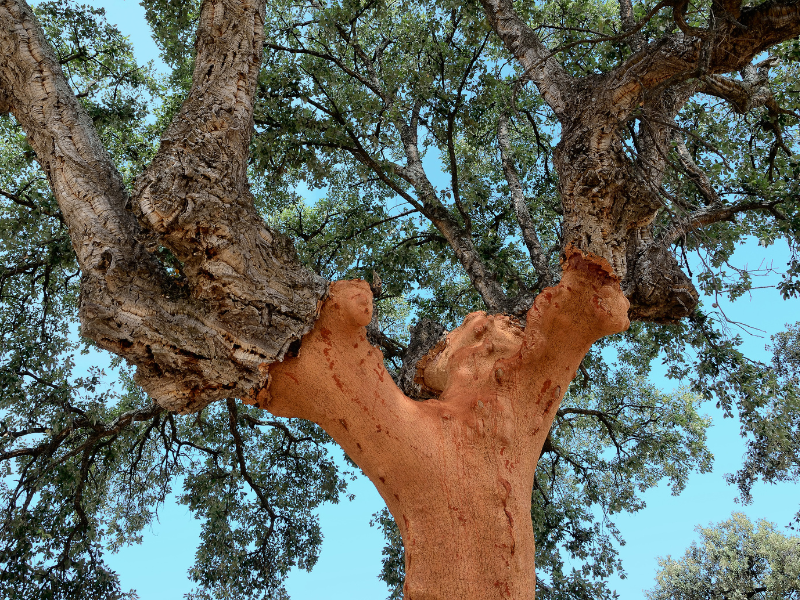Hidden bays with sandy beaches, fantastic trails for hikers or cyclists and historic towns: the Alentejo has a lot to offer visitors of all kinds. The coast of Portugal’s largest region is still unspoiled and untouched by mass tourism.
Alentejo translates as “beyond the Tagus” – the country’s largest region lies south of Portugal’s longest river. The Alentejo covers a good third of the Portuguese mainland, yet only seven percent of the total population live here. Visitors to Portugal usually focus on Lisbon or the coasts – and thus miss out on the Alentejo’s hinterland, which is still fairly undiscovered and has a lot of history to offer.
Take Évora, for example. The historic center of the city was declared a UNESCO World Heritage Site in 1986 and is particularly famous for its well-preserved Roman columned temple from the second century. Another landmark is the Aqueduto da Água da Prata, an approximately 18-kilometre-long aqueduct built in the 16th century.
Half an hour’s drive away is the Cromlech of Almendres, probably the oldest megalithic stone circle in Europe. It is estimated to be around 5000 to 6000 years old. Compared to the world-famous Stonehenge in England, this stone formation is more than 1,000 years older – and yet significantly less visited.
The small town of Mértola near the Spanish border is not to be missed. It is considered the most Arabic town in Portugal. Here, the era of Moorish rule – which lasted from the 8th to the 13th century – is still particularly visible, for example in the form of the Moorish arches of the main church Igreja Matriz. They are a reminder that the Christian church was once a mosque. The narrow streets and whitewashed houses also point to the Moorish heritage.
The Guadiana flows below the mighty city wall. Ancient amphorae are still found on its banks today, testifying to a long wine tradition. In the past, the river was used as a natural trade route to the Mediterranean. The vineyards around Mértola can be visited on tasting tours, and many wineries offer overnight accommodation for tourists.
The longest sandy beach in Portugal
The Alentejo coast is a good alternative to the Algarve. It offers dune landscapes with a good 45 kilometers of the finest sandy beach, from the Tróia peninsula in the north to Sines in the south, still unspoilt and far away from mass tourism. People surf and swim here; cycle paths lead through the dunes to the Atlantic.
South of Sines lies the protected Parque Natural do Sudoeste e Costa Vicentina. This is where the steep coast begins abruptly, with cliffs that have been bizarrely shaped by the sea and wind. In between are hidden sandy beaches accessible via paths, such as Praia dos Alteirinhos. Holidaymakers can hike along the cliffs on the 80-kilometre-long Trilho dos Pescadores fishing trail.

The oldest dog in the world
At 31 years old, Bobi is the oldest dog in the world. The Rafeiro do Alentejo, a rare Portuguese herd protection breed, was born on May 11, 1992, according to veterinary records. According to Guinness World Records, this makes Bobi not only the oldest living dog, but also the oldest dog of all time. Never before have the publishers of the “Guinness Book of Records” recorded a dog that reached an even greater age.
The life expectancy of these large guard dogs is actually between twelve and 14 years. The fact that record-breaking Bobi is still alive – in Conqueiros, a village of 300 inhabitants – is attributed by his owner to the quiet and peaceful environment. Leonel Costa respects his pet’s great need for freedom and says that he has never put him on a lead. All his life, Bobi has been allowed to roam freely, exploring the fields and woods that surround the house. The only thing he now finds difficult is walking. He takes it easier now.
Cork from ancient giant trees
If you open a bottle of wine sealed with a natural cork, it is highly likely that you are holding a piece of Portugal in your hand. More than half of the cork consumed worldwide is produced here – mostly in the Alentejo, where ancient cork oak forests characterize large parts of the landscape.
These trees are considered to be particularly robust; they can withstand temperatures between minus five and 40 degrees – their bark serves as natural insulation for the oak. Up to 15 centimetres thick, it even protects the tree core in the event of forest fires. However, a partially debarked tree takes nine years to heal. Because of this effort, cork oaks rarely reach their maximum age of 400 years. Such ancient giants are therefore protected.

What makes the ham unique
Air-dried and unique in taste – the Alentejo is famous for its ham. The Presunto de Porco de Raça alentejana (ham from the Alentejo pig) comes from grazing pigs that live in cork and holm oak groves in summer and winter and feed exclusively on acorns.
The fatty acids in these forest fruits give the ham its special flavor. It is so strong that even the bones are used, for example in cozido à portuguesa. This hearty stew of vegetables and meat is considered a national dish.
Alentejo kitchen: Alentejo-style fish stew: a traditional recipe full of flavor


[…] Related article: Alentejo – the undiscovered alternative to the Algarve […]
[…] Interesting Alentejo: Alentejo – the undiscovered alternative to the Algarve […]